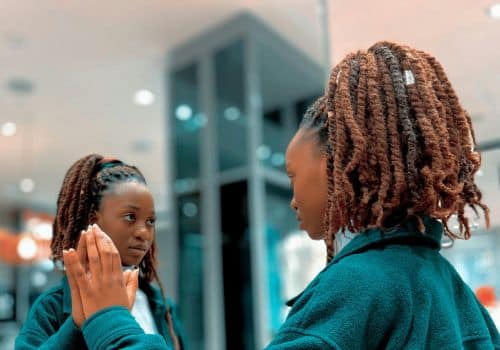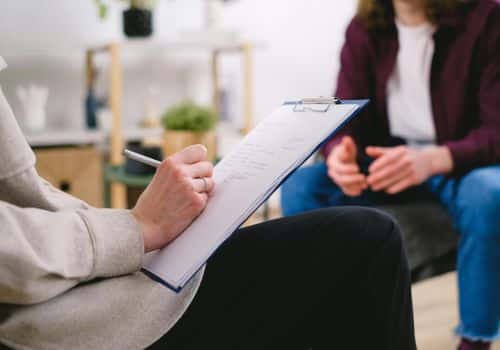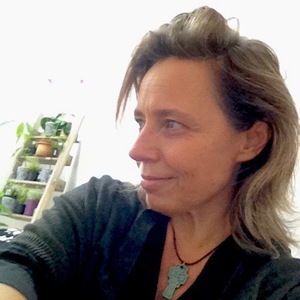Autism and ADHD have long been seen as two distinct forms of neurodivergence. But what if they overlap? The term AuDHD has emerged to name this experience, offering validation and bringing clarity to patterns of thought and behaviour that might once have felt confusing or contradictory.
At Leone Centre, we often meet people who have spent much of their lives trying to “make sense” of themselves. They may have been told they are too much, not enough, too sensitive, too intense or too distracted.
Yet what if those very traits are not deficits, but expressions of a different kind of perception, one that deserves listening, not managing?
What happens if we look past those labels? What if, instead of fitting ourselves into categories, we approach these experiences with compassion and curiosity? Often, what emerges is a richer story: the layered, nuanced reality of minds that hold both ADHD and autism, and the humanity that lives beyond any one diagnosis.

Subscribe to stay updated with the latest blog posts from Leone Centre.

What is AuDHD?
AuDHD is not an official term. It’s a word that has emerged from lived experience, from people searching for a language that feels closer to the truth of who they are. It points to the meeting place of autism and ADHD, describing two ways of being once thought to be distinctly separate.
Until 2013, it was not possible to be diagnosed with both ADHD and autism. Systems demanded a choice and one explanation over another. Imagine what that meant for the many who lived with both? Their stories trimmed to fit whichever description seemed most pressing at the time.
Clinically, autism and ADHD are diagnosed separately using DSM-5-TR or ICD-11 criteria, and co-diagnosis is now permitted.
Today, AuDHD offers a bridge that emerges from lived experience, not from textbooks, but from people searching for words that feel closer to the truth. It acknowledges that some people don’t fit neatly into one box or another, that their reality is woven from both to varying degrees. With growing awareness, space is opening for a more balanced approach to research and support that hadn’t been pursued before.
Understanding this overlap is not about collecting labels, but about giving a voice to the challenges and triumphs of a different way of perceiving the world. What possibilities open up when we stop reducing people to categories and begin to notice the richness of their lived experience?
AuDHD – More Common Than You Think
With the ambiguity surrounding AuDHD, many may lean towards doubting their experience as an isolated one. But the statistics tell a different story.
You may be surprised to find that:
- Recent research shows that around four in ten autistic individuals also meet criteria for ADHD, while between one and three in ten people with ADHD show significant autistic traits, depending on age and method of assessment.
- A large 2024 school-population study found a 1% co-diagnosis rate, highlighting that overlap is not rare but often under-identified in community samples.
- Prevalence also varies across development: symptoms may appear more differentiated in early childhood and blend in adulthood, which can delay recognition.
Awareness shifts the story. Instead of self-doubt, it can bring a sense of recognition: you are not alone, and you are not an outlier. It also reminds us that no two experiences are identical.

Misconceptions Around Attention
One of the reasons many neurodivergent individuals might question whether they have both autistic and ADHD traits is how we associate attention with either.
In ADHD, the “AD” stands for “attentional deficit”. This can often lead to the assumption that having ADHD translates as an inability to pay attention. In reality, many ADHDers don’t lack attention but experience it differently. They often show interest-driven attention, experiencing periods of hyperfocus, intense and sustained concentration on highly stimulating or rewarding tasks. For many with ADHD, attention is more like sunlight through leaves: scattered and shifting, being pulled in multiple directions. And yet, when something truly resonates or captures interest, they can drop into hyperfocus so completely that time itself seems to bend. Hyperfocus is not unique to ADHD, but it tends to occur more frequently and more disruptively within ADHD populations.
For autistic individuals, focus can be so complete that shifting away feels like loss. Autism is often linked with sustained, deeply focused attention. This can sometimes be so immersive that external circumstances fade into the background. Shifting attention can be difficult, especially when tied to a special interest or when sudden changes in the environment require adaptation.
On the surface, these two portraits may appear distinct. If we look closely, we see the echo: both autistic and ADHD individuals can experience hyper-attention. This crossover can feel confusing, or it can feel like recognition. It tells us something important: the capacity to focus does not cancel out ADHD, just as struggles with focus do not cancel out autism.
AuDHD is not about confinement in a label, but about validation that the overlap itself is real, and that the lives shaped within it are no less whole or worthy of understanding.
Where Traits Overlap
When autism and ADHD meet, the result isn’t double the difficulty; it’s a unique choreography of strengths and struggles.
- Executive Functioning: The mind might feel full of ideas but short on sequence. Yet once engaged, focus becomes creative flow.
- Sensory Experience: The world might feel too loud, too bright, or endlessly fascinating and alive with texture and detail. A 2025 meta-analysis confirmed that sensory processing differences are significant in both ADHD and autism and the pattern varies across age and sensory modality.
- Social Connection: There’s often a longing to connect and a simultaneous exhaustion from trying to do it “right.” Underneath it all lies honesty, depth, and an exquisite ability to sense nuance.
- Emotion: Feelings can be tidal, intense, shifting, alive. But this sensitivity also brings empathy, passion, and insight.
No two AuDHD experiences are the same. Each is a distinct rhythm — a personal constellation of perception and energy.

The Weight of Being Misunderstood
For many people with AuDHD, recognition comes late, if at all. Some are seen as fitting only one category, while others are misunderstood entirely or dismissed as ‘too anxious’ or ‘too sensitive’’ When their experiences don’t seem to align neatly with either autism or ADHD, they may turn the doubt inward: Maybe I’m just not trying hard enough. Maybe I should know how to function by now.
The cost is often invisible. A quiet erosion of self-trust, with real consequences. It may prevent someone from seeking support altogether, leaving them to carry the belief that they either don’t need help, or worse, don’t deserve it. And when support is offered but focused only on ADHD or only on autism, it may not fit. Sometimes, it even amplifies existing struggles, leaving people feeling more unseen.
The impact of this lack of recognition can include:
- Years of self-doubt: questioning one’s own experiences and validity.
- Difficulty accessing appropriate support: resources that don’t fully address the overlap between ADHD and autism.
- A deep sense of isolation: feeling like no one else lives with this combination of challenges and strengths.
- The impact of masking: Camouflaging or masking is widely reported among autistic and AuDHD individuals. On average, it appears more frequently in women and late-diagnosed adults; it is associated with later recognition and emotional exhaustion.
Language matters because it shapes how we see ourselves. Language like AuDHD doesn’t fix everything but can open doors: it allows people to name their experience, reclaim their story and seek the kind of support that honours the whole of who they are.
How Neurodivergent-Affirmative Therapy Can Help
At Leone Centre our focus is not on fixing, but on understanding. Neurodivergence is not a problem to be solved, but a reality to be honoured. For those with AuDHD, therapy can be a space to move beyond labels and into a deeper exploration of what it means to live fully and authentically.
Neurodivergent-affirmative therapy shifts the emphasis from clinical assessment to human connection and practical support. It recognises the complexity of living with both autism and ADHD, and creates space for the ways they converge in everyday life. A psychotherapist’s role is to accompany rather than correct, to listen with curiosity, and to adapt their approach to the unique needs of each individual.
In therapy, this translates to:
- Affirmation, not correction: validating the lived experiences of AuDHD individuals rather than pathologising them.
- Strength-based focus: exploring creativity, resilience, and unique problem-solving.
- Practical strategies: supporting executive functioning, sensory regulation, and emotional wellbeing.
- Relational repair: helping clients navigate friendships, partnerships and family dynamics with more understanding.
- Identity exploration: creating space to integrate autism and ADHD into a coherent sense of self.
Therapy, in this sense, becomes a collaboration: a place where challenges are acknowledged, strengths are celebrated, and a fuller story of self begins to unfold.

Couples Therapy for AuDHD and Neurodiverse Relationships
When one or both partners have AuDHD, differences in communication, sensory needs, or emotional rhythms can create misunderstandings. Couples therapy provides space to reconnect and better understand each other.
Focus areas include:
- Bridging communication styles
- Navigating sensory and emotional needs
- Rebuilding understanding with empathy
- Honouring neurodiverse perspectives
Whether both partners are AuDHD or one is neurotypical, therapy can help to build balance, compassion, and deeper connection.
Cultivating Spaces Where Difference Is Welcomed and Understood
Moving from tolerance to celebration begins with how we show up in everyday life. For individuals with AuDHD, the difference is felt in whether they feel managed or truly met, explained away or genuinely understood.
Within supportive spaces, this becomes an invitation to approach one another with compassion and curiosity. In practice, that can look like:
Supporting loved ones in seeking support: Encouraging and walking alongside friends or family members as they access neurodivergent-affirmative support.
Understanding social energy: Masking (the effort to present in ways that feel socially acceptable) requires significant mental energy and can be deeply draining. When that “social battery” runs out, what may appear as withdrawal is often simply the natural recovery needed after prolonged adapting.
Being a safe space: Social energy can be demanding to manage, and for AuDHD individuals it matters deeply to have people who feel like “safe spaces.” These are friends or family who offer unconditional acceptance, where there is no pressure to mask. In these spaces, energy can be conserved, authenticity can breathe, and connection feels restorative rather than draining.
Acknowledging sensory differences: Overstimulation from light, sound, or touch can be overwhelming for autistic individuals, while for those with ADHD the same stimuli may compete for attention. ADHD can also bring sensory-seeking tendencies such as craving movement, novelty, or stimulation rather than avoiding it. For AuDHD individuals, these patterns often overlap, blending sensitivity with seeking. When peers respond with understanding and compassion, it reduces feelings of alienation and makes space for recognising when a change of environment or support might be appreciated.
Letting go of assumptions: Not everyone’s experience will mirror a stereotype. AuDHD opens a window into the many possible ways ADHD and autism can coexist.
Honouring uniqueness: Accepting that the neurodivergent experience is not less valid than the neurotypical one, just different.
When we dismantle “shoulds” and assumptions, AuDHD becomes less about categories and more about embracing the richness of diverse perspectives and experiences.

Moving Towards Belonging
Living with AuDHD can feel like navigating a world that speaks a different language. But therapy can become a place where your language is honoured and you don’t have to translate or tone yourself down.
When we recognise both autism and ADHD together through neurodivergent affirming support, we move away from the narrative of being “too much” or “not enough.” Instead, we find belonging.
AuDHD sits right in a paradox: a reminder that our minds don’t have to fit neatly into diagnostic shapes to be real, valid, or worthy of care.
Here at Leone Centre, we have many experienced therapists who can offer you that support whether in person in London or online.
“I offer neurodivergent-affirming therapy that honours who you are, beneath the mask, beyond the diagnosis. Together, we make space for your grief, celebrate your insight, and gently build a life that feels safe, real, and fully your own.” – Olena Baeva, Leone Centre Therapist
View Our Neurodiversity Affirming Therapists Here
Because at its core, therapy is not about changing who you are, it’s about helping you live more fully as yourself and becoming more deeply, more confidently, more you.






